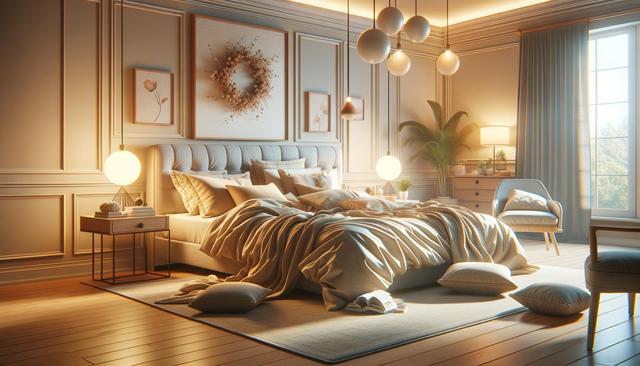Understanding Your Child’s Needs
When selecting a bed for your child, it’s essential to consider their specific needs based on age, personality, and sleeping habits. A toddler transitioning from a crib may benefit from a low-to-the-ground toddler bed that offers safety and a familiar sleeping environment. As children grow, their preferences and space requirements evolve, making it important to choose a bed that supports their development and comfort over time. Think about whether your child needs extra storage, a study area, or even room for sleepovers. These considerations will guide you toward a bed that fits not only their current stage but also their growth in the years ahead.
Key factors to assess include:
- Age-appropriate safety features such as guardrails
- Space efficiency for small rooms
- Ease of getting in and out of bed independently
- Durability of materials for long-term use
Taking the time to evaluate these elements will help you select a bed that aligns with your child’s daily routine and nighttime needs.
Types of Kids Beds to Consider
There are several bed types designed specifically for children, each offering unique benefits depending on room size and lifestyle. Bunk beds, for example, are a popular choice for siblings sharing a room or for kids who enjoy the novelty of sleeping on an upper level. Loft beds provide space underneath for study desks or play areas, making them a great option for maximizing small bedrooms. Meanwhile, trundle beds offer a practical solution for occasional guests or sleepovers without taking up extra floor space on a daily basis.
Here are some common types of kids beds:
- Toddler beds – low height, often with side rails
- Single beds – suitable for school-aged children
- Mid-sleeper and high-sleeper beds – elevated frames with space-saving features
- Convertible beds – designed to transition as your child grows
Each option comes with its own pros and cons. For instance, while bunk beds save space, they may not be suitable for very young children due to safety concerns. Choosing the right type depends on your child’s age, room dimensions, and daily activities.
Safety First: Features to Look For
Safety should be a top priority when choosing a bed for your child. Children are active and curious, which makes it important to select a bed that minimizes risk and supports safe sleep. Look for beds with rounded edges, non-toxic finishes, and solid construction. Guardrails are especially important for younger children, particularly if the bed is elevated. Slats or supportive bases should be strong enough to hold the mattress and your child’s weight without sagging or breaking.
Additional safety features to consider include:
- Sturdy ladders or stairs for loft or bunk beds
- Secure guardrails on all elevated sleeping surfaces
- Anti-slip footings for stability
- Compliance with safety standards and certifications
It’s also wise to periodically check the bed frame and components for signs of wear or loosened parts. Prioritizing safety not only ensures a restful night’s sleep but also gives parents peace of mind.
Design and Functionality
Creating a space that reflects your child’s personality can make bedtime more enjoyable and help foster a sense of independence. Many kids beds come in fun themes, colors, and styles that appeal to different interests—whether it’s a castle, a race car, or a minimalist wooden frame. While aesthetics matter, it’s equally important to consider the functionality of the bed. Some beds include drawers underneath, bookshelves in the headboard, or even built-in desks for homework and creative activities.
Functional features to look for:
- Integrated storage to reduce clutter
- Convertible designs that adapt as your child grows
- Multi-use setups like loft beds with desks or seating areas
Choosing a bed that combines form and function allows you to make the most of your child’s space while supporting their daily routines. Involving your child in the selection process can also help them feel more connected to their new bed and encourage better sleep habits.
Budget and Long-Term Value
While it’s tempting to choose a lower-cost option, it’s important to consider the long-term value of the bed you’re purchasing. A slightly higher upfront investment in a quality bed can lead to savings over time if the bed lasts through multiple stages of your child’s development. Look for beds made from durable materials such as hardwood or reinforced metal that can withstand daily use. Also, consider whether the bed can be modified or upgraded in the future.
Ways to make a cost-effective choice include:
- Opting for beds that grow with your child (e.g., adjustable frames)
- Choosing neutral styles that remain suitable over time
- Selecting multi-functional designs that reduce the need for additional furniture
Remember, the right bed isn’t just a place to sleep—it’s a space where your child will rest, play, learn, and grow. Balancing affordability with quality will help ensure you make a smart, lasting investment.
Conclusion
Finding the right bed for your child involves more than just picking a size or color—it’s about creating a safe, functional, and inviting environment where they can thrive. From evaluating safety features and bed types to thinking about design and long-term value, every decision plays a role in your child’s comfort and development. By taking a thoughtful approach and involving your child in the process, you can choose a bed that meets their needs today and adapts to their growth tomorrow.




Leave a Reply